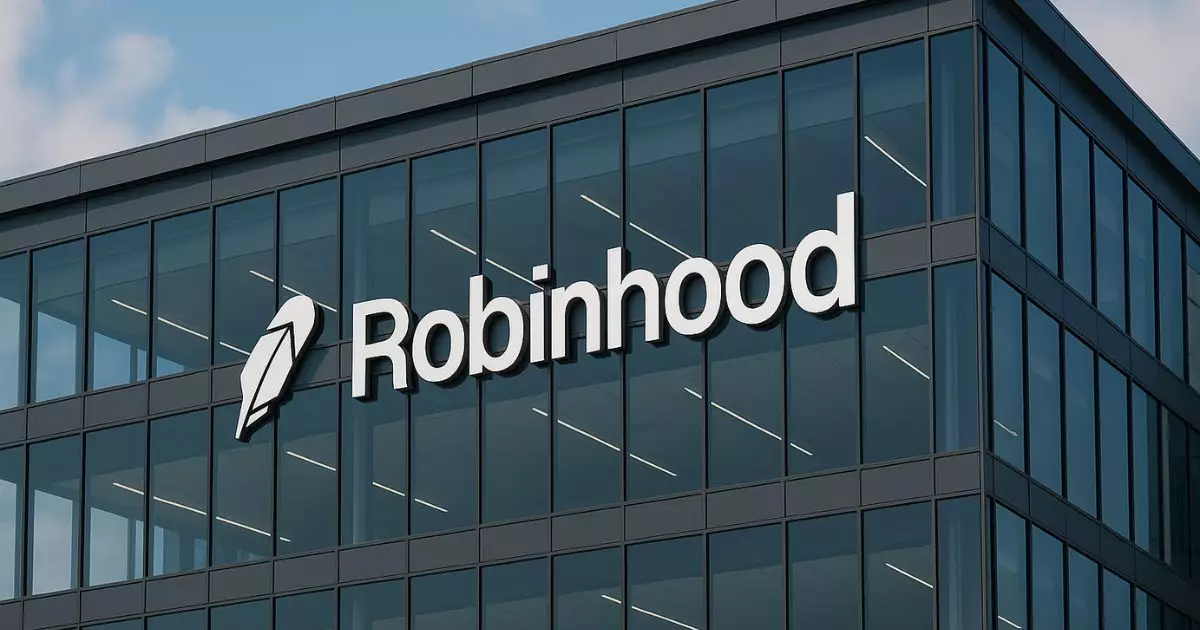In an era where technology is rapidly reshaping traditional models, Robinhood’s recent proposal to the U.S. Securities and Exchange Commission (SEC) marks a significant move toward embracing tokenized real-world assets (RWAs). The potential market for tokenized RWAs is estimated to reach a staggering $30 trillion, illuminating the financial landscape’s shift as it veers toward digitalization. Robinhood’s comprehensive 42-page filing advocates for a federal framework that embraces digital assets, allowing stocks, bonds, and real estate to morph into tokens reflective of their underlying values. This progressive vision challenges the prevailing skepticism surrounding digital assets, paving the way for a future where finance is reimagined through the lens of technology.
Regulatory Framework: Bridging Gaps in Tradition
The fragmented nature of current regulations regarding RWAs has created a convoluted landscape. Robinhood’s proposal highlights a critical truth: the financial ecosystem is bogged down by isolated initiatives and regulatory sandboxes that, while well-intentioned, lack coherence. By advocating for a unified national framework, Robinhood is not merely adding another layer to the regulatory burden; they are proposing a streamlined structure where broker-dealers can engage in the issuance and trading of tokenized securities under a standardized compliance model. This is not merely an exercise in legal finesse but a bold assertion that a cohesive regulatory approach can facilitate innovation without stifling it.
The call for a Real World Asset Exchange (RRE) garners particular attention. The incorporation of off-chain trade matching coupled with on-chain settlement represents a significant evolution in the transaction processes. This hybrid model can mitigate numerous pitfalls associated with conventional trading methods, such as lengthy settlement periods and legal ambiguities surrounding ownership rights. Robinhood’s insistence on implementing robust compliance tools like KYC and AML provisions shows a commendable commitment to investor protection, a principle that too often gets lost in the fervor of technological advancement.
Championing Tokenization: A Novel Perspective
Perhaps the most groundbreaking aspect of Robinhood’s proposal is its staunch defense of tokenized assets as direct representations of traditional financial products rather than derivatives or synthetic instruments. This assertion addresses widespread apprehensions among regulators about the legitimacy and stability of digital assets. By distinguishing tokenized RWAs from more volatile derivatives, Robinhood is positioning itself as a reasonable intermediary between traditional finance and the burgeoning cryptocurrency space.
This perspective not only seeks to gain regulatory favor but also aims to persuade institutional investors who remain wary of entering the digital asset arena. It opens a new pathway for broader institutional adoption of tokenized finance, which is crucial for the maturation of this market. If institutional players can view tokenized assets as legitimate extensions of traditional investments, we may witness an avalanche of capital inflow into this burgeoning sector.
A Test of Regulatory Resolve
As the SEC weighs Robinhood’s proposal, the broader implications cannot be overlooked. This filing represents not just a singular initiative but potentially foreshadows how financial regulators will view the intersection of digital assets and mainstream finance. Should the SEC endorse Robinhood’s framework, it could signal a seismic shift in regulatory attitudes, fostering an environment where traditional and digital finance coexist harmoniously. Historically, regulatory bodies have been reticent to grant legitimacy to innovations that challenge established norms, often opting for a cautious approach instead.
However, the winds of change are blowing. Robinhood’s audacious step into the regulatory conversation illustrates a willingness to engage with the SEC actively, rather than simply pushing back against regulatory constraints. As the company seeks to anchor tokenized finance to existing compliance standards rather than proposing entirely new technologies, it emphasizes a vital principle: innovation does not need to come at the expense of oversight, and there is a path forward that respects both tradition and innovation.
Robinhood’s recent actions represent a significant milestone in the treatment of real-world assets as tokenized entities. By aspiring to merge technological innovation with established regulatory practices, Robinhood has not just attempted to innovate but to redefine the principles governing financial transactions at large. The success of this initiative will fundamentally depend on its reception within the regulatory landscape and its ability to resonate with both institutional and retail investors in the ever-evolving world of finance.

